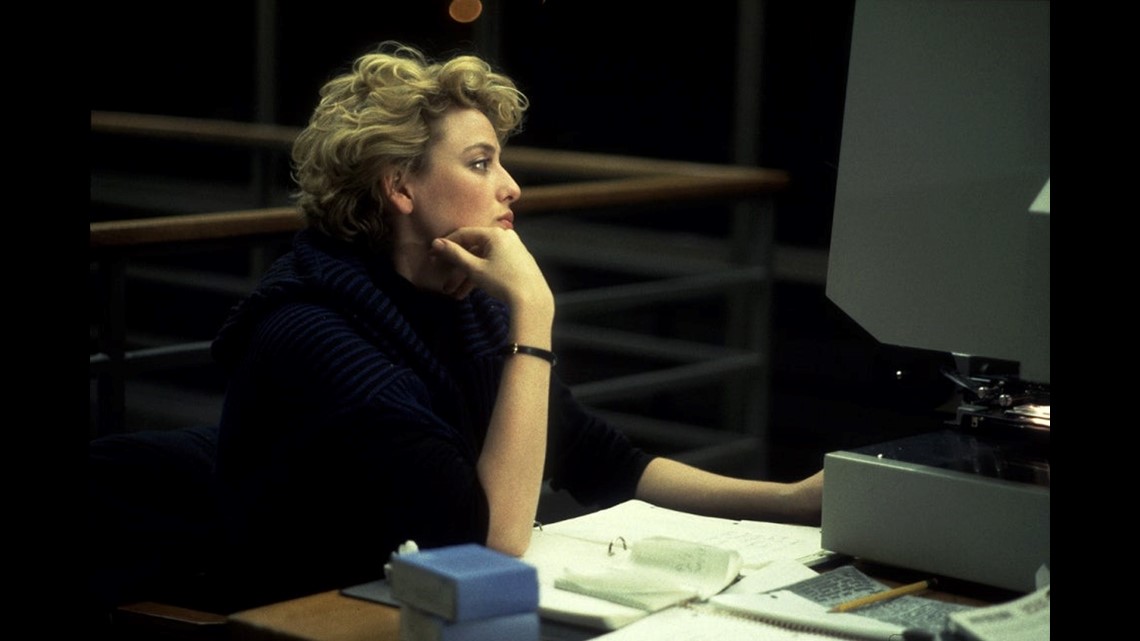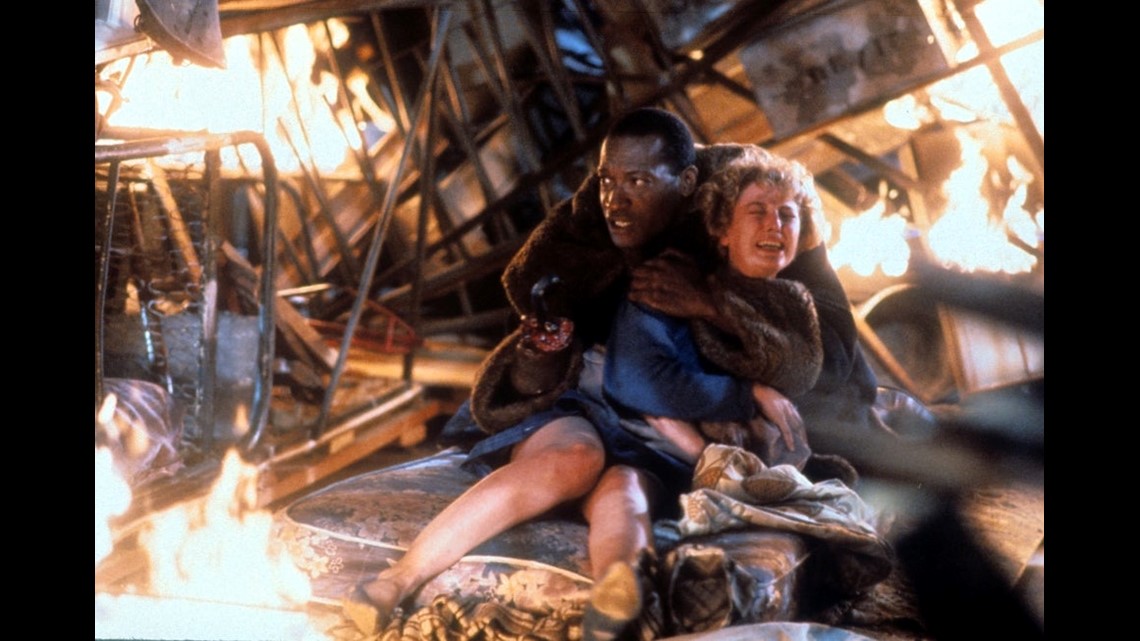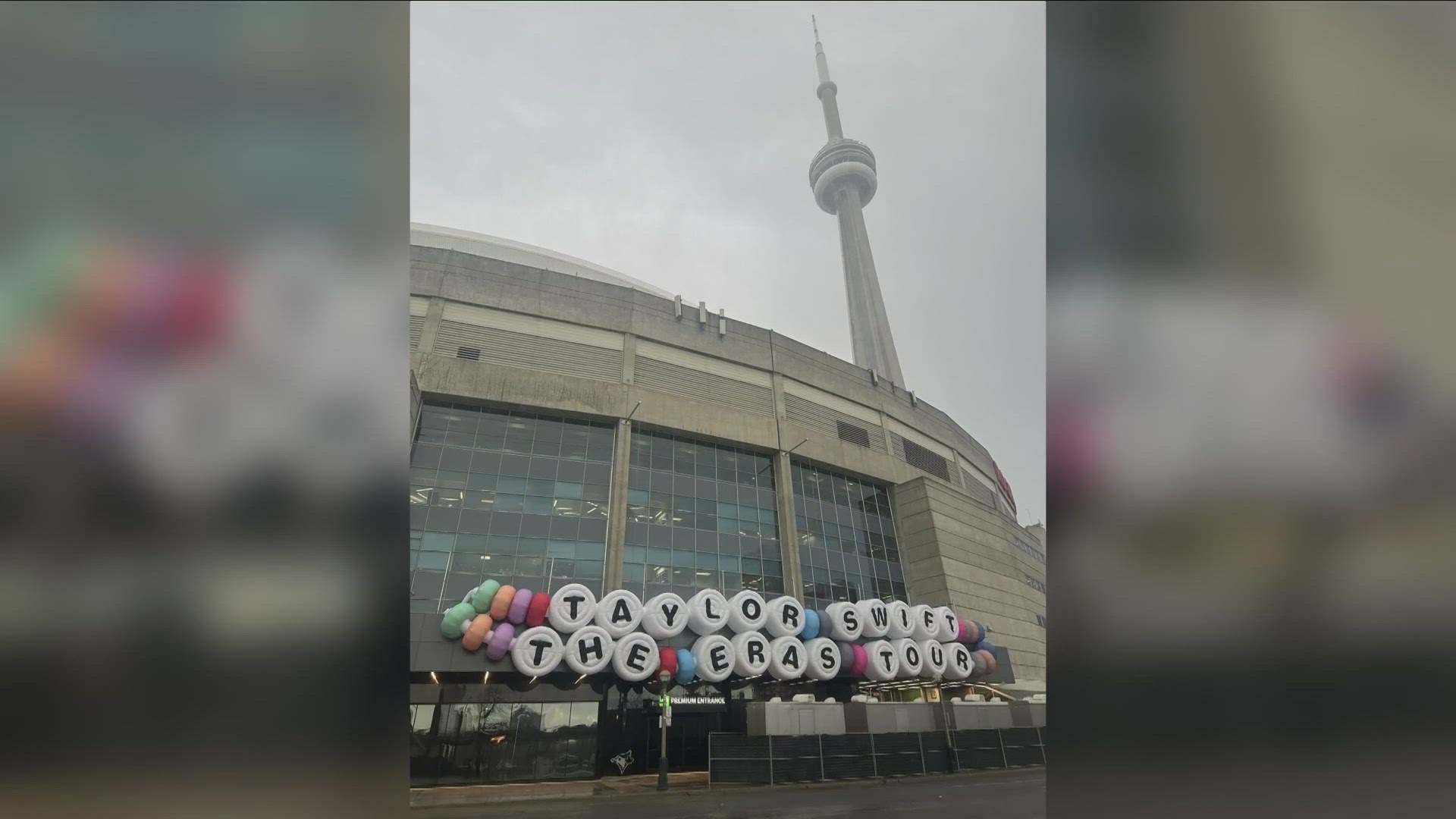It’s been 30 years since Tony Todd first uttered the words, "Be my victim," to a terrified Virginia Madsen in 1992's horror cult classic Candyman.
Based on Clive Barker's 1985 short story and brought to the screen by writer-director Bernard Rose, the supernatural slasher garnered three sequels, including Jordan Peele's 2021 installment, and was a hit with critics and audiences alike, especially within the Black community.
The film follows skeptical graduate student Helen Lyle (Madsen), as she researches an urban legend in a Chicago housing project, Cabrini-Green. She learns about the Candyman (Todd), a hook-wielding figure that local residents believe to be responsible for a recent murder. Soon a mysterious man begins stalking her and she fears the legend may be all too real.


To commemorate the original film's anniversary, ET reunited Madsen and Todd -- who have remained close friends in the decades since filming -- to revisit the film’s lasting legacy. "We were saying, when I got here, about how amazing it is 30 years later that it's still in the forefront of people's minds, particularly fans," Todd said as he and Madsen spoke with ET's Kevin Frazier.
"It's a classic scary tale told by the fireside and we knew that it was that way when we were first making it, so it wasn't surprising that it kept living on and on and on," Madsen noted.
"Whenever we appear together in fandom events, the fans are lined up around the block," Todd said, before Madsen quipped, "They're lined up for you."
Todd has played the titular character in every Candyman adaptation, and his frightening yet seductive performance has had fans hooked since the moment he first appeared on the screen. Surprisingly, it's not until 40 minutes into the first one, after Helen recites "Candyman" five times in the mirror -- a part of the myth that's been effectively recreated in every film since.
"I get so many stories at autograph tables about people doing challenges and mirrors and stuff," Todd recounted, referring to the film's folklore that results in him appearing in the mirror behind you. "That’s what keeps the film alive because it gets passed generationally."
While Madsen's character is a strong non-believer in the legend (until it's too late for her), the actress has been superstitious of his existence since the very beginning. She even told ET during the original press tour that she refused to say his name five times in the mirror. "I started doing the Candyman thing and then I said, 'No, no, no, if there is any of this going on, I don’t want it anywhere close to me!'" Madsen told ET in 1992.
In 2022, not much has changed for the actress, with Madsen telling ET now, "I have never said it five times in the mirror, even in the movie, just in case."
But what is scarier than the myth himself? The bees. In fact, 200,000 of them were used for the film's most infamous scene, when a swarm of bees fall out of Candyman's mouth as he leans down to kiss Helen. Unlike CGI-heavy movies of today, the scene was completed with practical effects.
"The bees were the worst nemesis," Todd was quick to note, before Madsen asked, "You got stung how many times?"
"I had a great lawyer at the time and we got paid," Todd pointed out. The actor had a clause that earned him an estimated $1,000 per bee sting. "So I didn't mind it, I'm going like, 'Bring it on!' And it only totaled to 27 [stings]."
It could have been worse if it were not for an unusual object repurposed just for the scene. "We had a dental dam so they couldn't go further down [my mouth]," Todd revealed.
"The bees had their own trailer!" Madsen pointed out. "It doesn't really make you feel confident when there's a big net cage set up around our scene to protect the crew and an ambulance standing by."
Madsen, meanwhile, is deathly allergic to bees, making the scene even more dangerous to film. "That's why they had the paramedics on the set, which didn't make me feel very confident. But the bees that were on me were baby bees so they can sting but they said they are less likely to," Madsen said.
"Then you had to sit for a good 20-25 minutes while [the bee wrangler] vacuums them off you," Madsen said as Todd chimed in to reveal "that's when they get feisty."
In the end, the effort was worth it. "You know, actors are trained to be fearless, so it was a fearless moment and it stood the test of time," Todd eloquently noted.


Something else that stood the test of time is the cultural and racial significance of the film. "It was well worth it and not just the bonus check, but being one of the first African Americans in a horror film that does not enslave us," Todd said. "When I first read it, I looked for those traps. I wanted to make sure that if you’re going to be one of the first significant Black actors in a horror film, you better make sure that it's complete, that it tells a story from beginning to middle and end, and that’s what I saw in the script."
The film also used real gang members from the Chicago area as extras in the Cabrini-Green setting. "There's a couple of scenes that you see actual gang members and for them it was the most honest living they had done up until that point," Todd reflected. "They got away from whatever their day-to-day routine was and they were making a film."
Despite the cultural significance, the film still had its roadblocks and critics along the way. Todd and Madsen both recounted a scene that never saw the light of day involving their characters dancing a "beautiful" waltz. "[The studio] cut that out because they felt that it was too intimate at that point," Todd noted.
"I think we both felt that was like the most beautiful thing we did because the thing about Candyman is he's a poet and a painter and an artist, he's so romantic," Madsen shared. "Because of our chemistry, the more that became apparent, the less they wanted of it, and yeah, it makes me mad."
"One day, maybe it'll show up in the reprint," Todd remarked, adding that he knows the footage exists somewhere.
Fortunately, the Candyman franchise is more alive than ever following Peele's sequel (also titled Candyman), which heavily leaned into its racial themes. Starring Yahya Abdul-Mateen II, Teyonah Parris and Colman Domingo, it was directed by Nia DaCosta, making her the first Black female director to debut a film in the number one spot at the box office.
Both Madsen and Todd were participants in the film, with Madsen providing a voice cameo and Todd briefly appearing onscreen in the closing moments. "I got the phone call from Jordan and he explained to me what was going on and it was one of the most cheeriest phone calls I ever had in my life because I knew that he cared," Todd shared, while Madsen added, "They gave a lot of respect to both of us."
Plans for another Candyman film have started but the question remains if Todd will return again. Noting it is all just "whispers" right now, Todd said, "We shall see, it all depends on the set of circumstances."
It seems hard to imagine a Candyman film without Todd participating in some form, but regardless, the original continues to live on forever for fans. "I'm proud of the film, I'm glad to have been a part of it, it's part of my legacy and I've been working nonstop for 30 years. It's a good thing," a grateful Todd said.
RELATED CONTENT:



